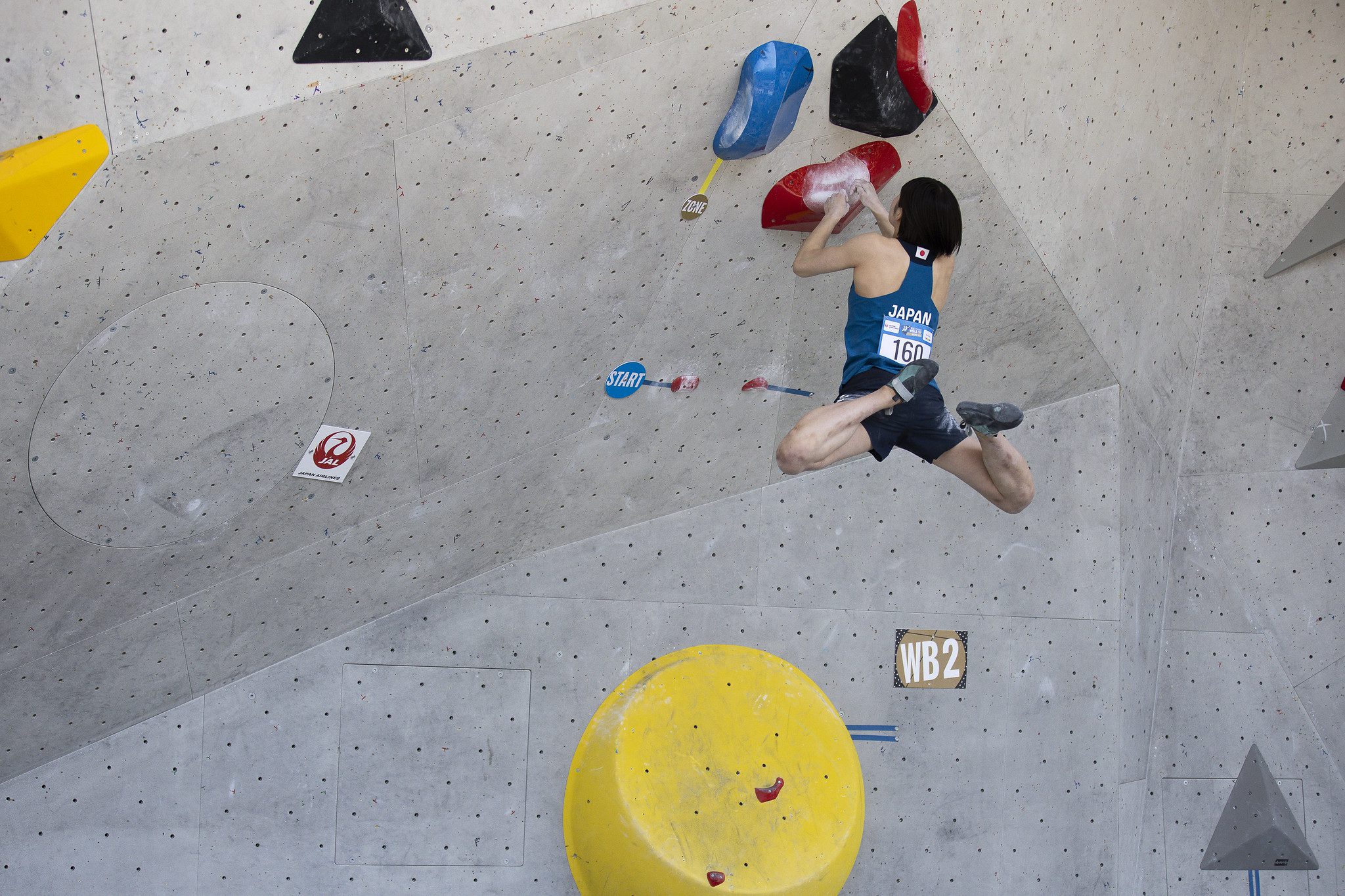New to Dynamic Moves? Here Are Five Exercises to Get Started
These fun on- and off-wall exercises will have you lunging to holds in no time
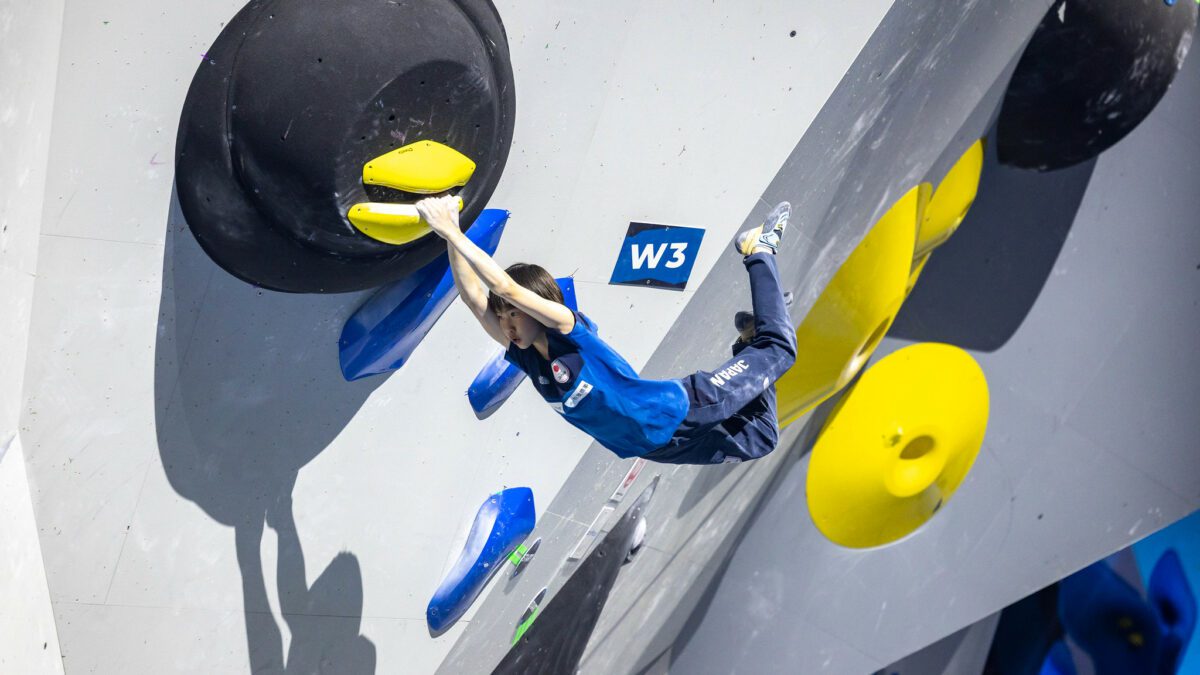 Photo by: Lena Drapella/IFSC
Photo by: Lena Drapella/IFSC
New to climbing and want to improve your confidence with dynamic movement? Or perhaps you’re a long-time climber who almost exclusively uses static movements and wants to become more dynamic? If so, then this article is for you.
Being able to move dynamically is an essential tool in climbing. It helps you execute dead points, dynos, and long throws. Dynamic movement is deeper than just these big, burly moves though. When implemented properly, being dynamic can also improve efficiency as you move up the wall, conserving momentum and flowing from hold to hold.
Here are five exercises to get you started on the path to becoming a more dynamic climber. Three are off-wall exercises and two are on-wall. Choose three exercises (ideally two off-wall and one on-wall) that you can perform once or twice weekly, either before a bouldering or route climbing session or on a specific power training day. Before doing these exercises, make sure you warm up thoroughly.
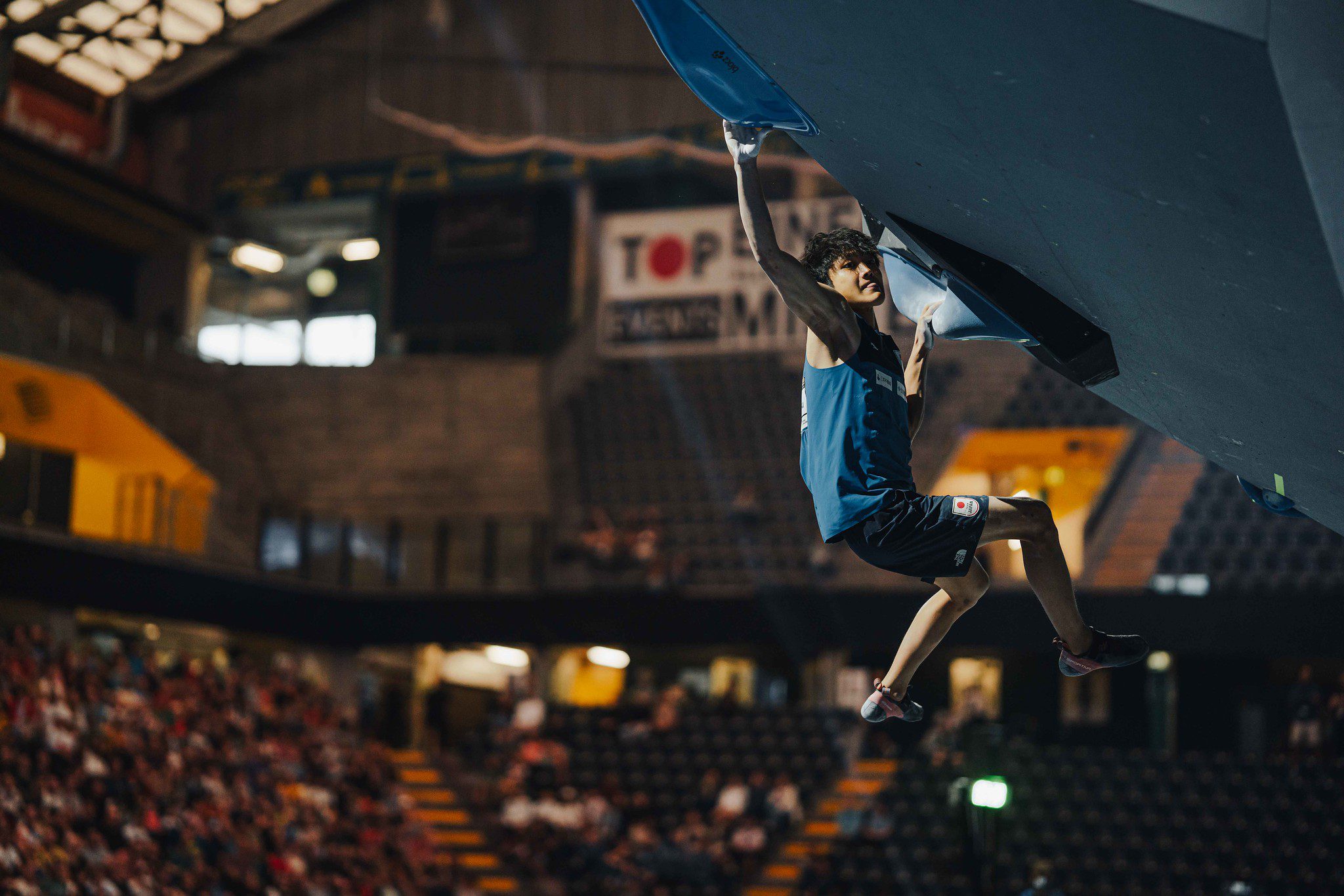
1. Jump and Catch
This exercise is simple but effective at getting comfortable with the feeling of catching and holding your body weight. Stand under a bar or set of good climbing holds. Jump up and catch the bar with both hands. Hold the position for 2 seconds and then drop back down. Perform 7 reps.
It’s very important that you catch the bar with engaged shoulders and with a slight bend in your arms. When you hold the position, maintain shoulder engagement and the bend in your arms. Do not sag into straight arms or disengaged shoulders.
Do 3 sets of 7 reps. Rest 2 minutes between sets. Over time, try to progress to a higher bar or hold. Alternatively, stand farther back from the bar, forcing you to commit to a bigger jump. You can also vary this exercise by catching in a lock-off position or exploding into a pull-up.
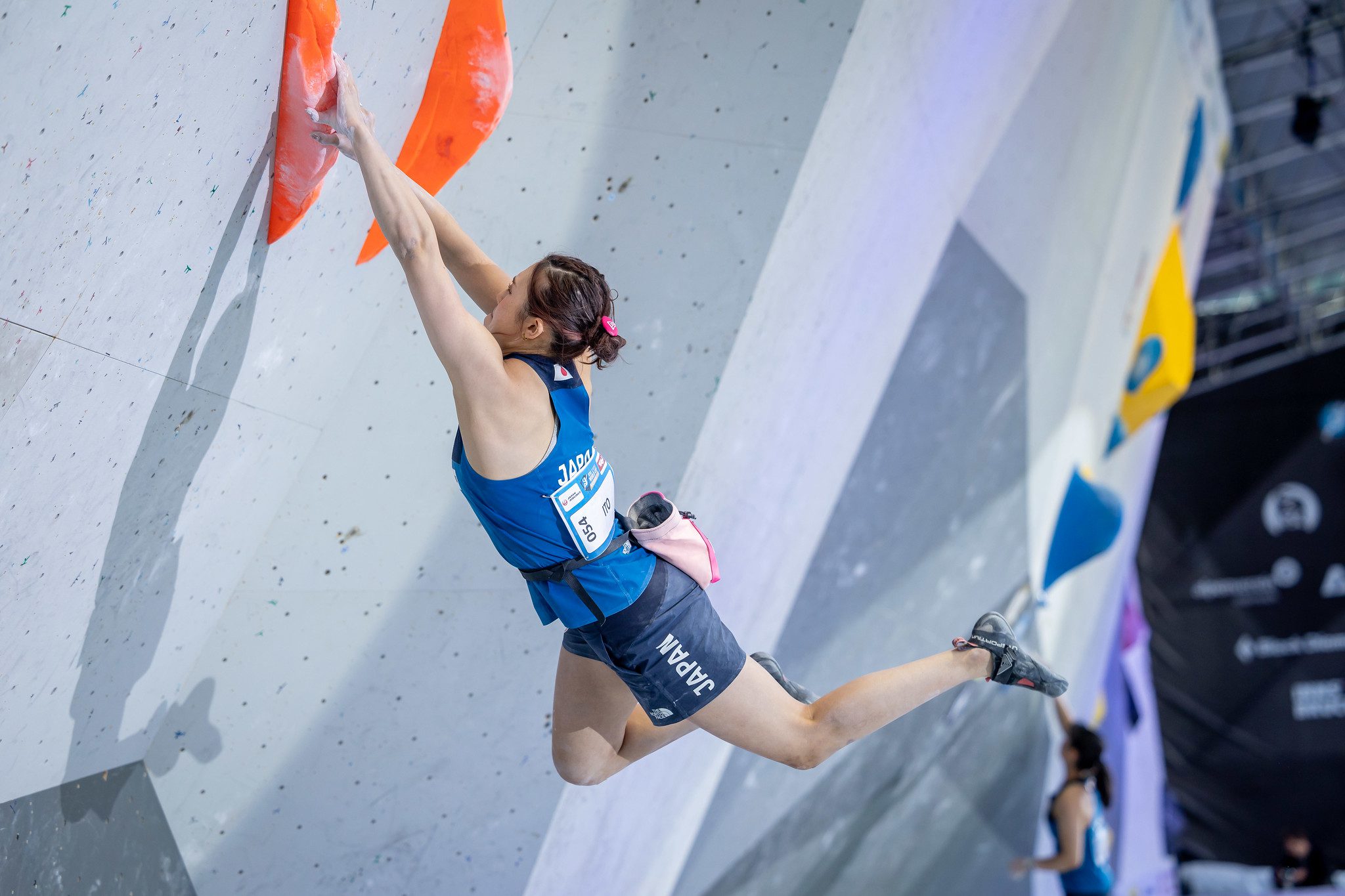
2. Box Jumps
When performing big throws or dynos on the wall, movement should be generated primarily from the legs, not the arms. Box jumps are a great exercise for developing this explosive upward movement from the lower half of your body—priming you for dynamic on-wall moves.
Stand in front of a stable platform approximately a foot-length away. Your legs should be shoulder-width apart. Jump onto the platform by exploding simultaneously off both legs. Both feet should land on the box at the same time and your knees should be bent to absorb your downward momentum. Step or jump back down to return to the starting position.
Do 3 sets of 7 reps. Rest 2 minutes between sets. Over time, try to progress to higher platforms. Watch the video below for a demonstration of box jump form.
3. Campus Board Jugs
If your climbing gym’s campus board has a jug ladder, then give these exercises a try. To build strength and confidence in powerful, dynamic movements, you can perform standard campus board protocols on a campus jug ladder rather than the standard campus board edges, which can be much too fingery and injury-inducing for newer climbs.
Here are two classic exercises, each with a left hand and right hand version. The numbers refer to the jug number on the campus board (with 1 being the lowest rung on the board). L means left hand, R means right hand, and Match means hands together.
- Match2 – L3 – R4 – L5 – R6 – L7 – R7
- Match2 – R3 – L4 – R5 – L6 – R7 – L7
- Match2 – R4 – L5 – R7 – L7
- Match2 – L4 – R5 – L7 – R7
Perform each exercise (both left and right versions) 2 times, resting 3 minutes between reps. This long rest period will allow you to build up strength and power again for the next rep.
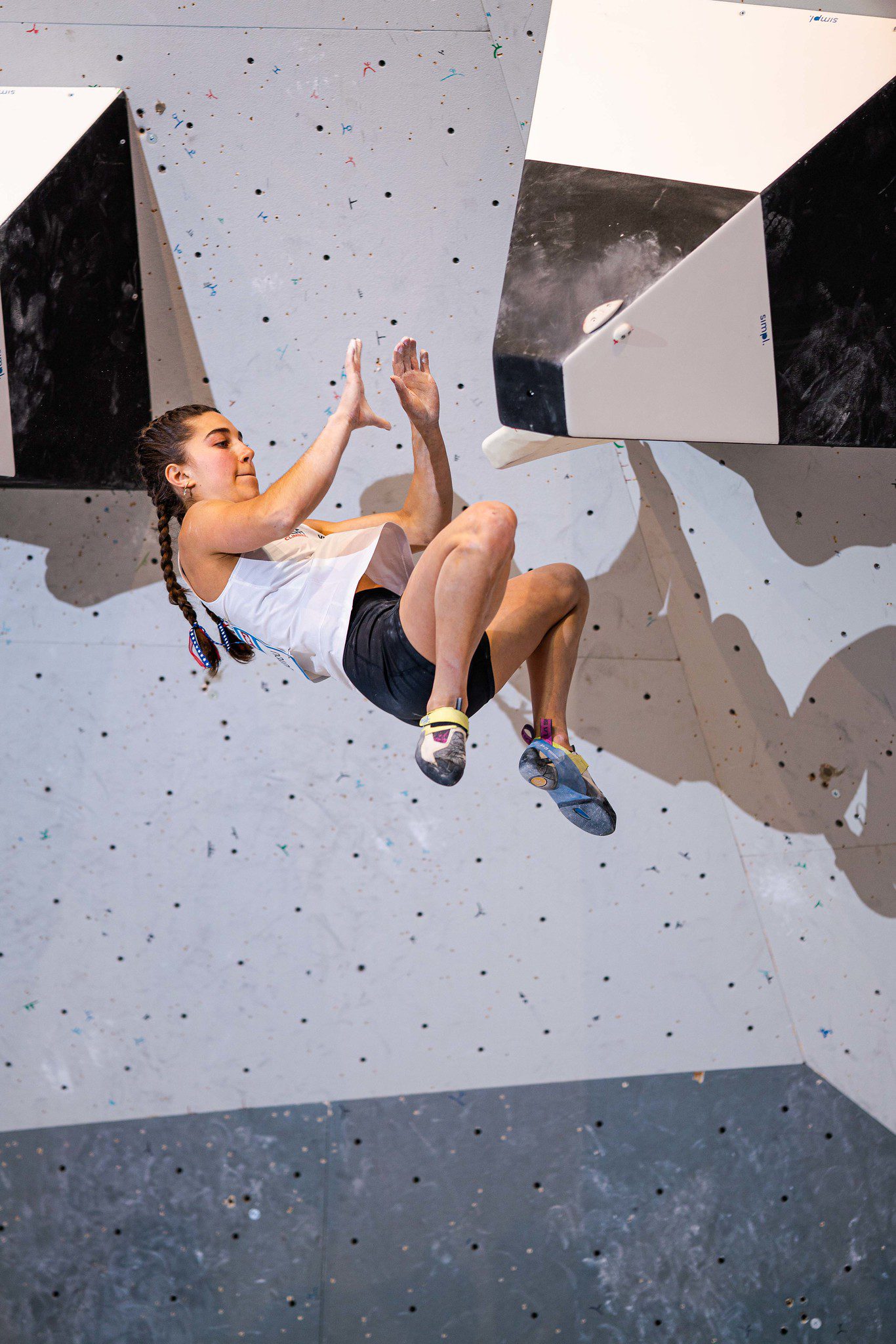
4. One-Armed Climbing
This exercise is a lot of fun. All you have to do is climb boulder problems using only a single arm. This forces you to deadpoint from hold to hold, improving your confidence and coordination in dynamic movement. Do your best to generate upward movement through your legs and hips rather than just pulling up with your arm.
At first, you might find this exercise really difficult. Start on very easy vertical or even slabby problems to get used to the movement. As you progress, move to slightly steeper terrain and higher V-grade problems. One-armed climbing is also great for building body position awareness as you’ll be forced to flag with your legs to stay balanced.
Do 3 problems of increasing difficultly. Perform each problem first with your right arm. Rest one minute. Then try it again using only your left arm. Rest 2 minutes between problems.
5. Boulder Campusing
This exercise is pretty simple: climb a series of boulder problems without using your feet on the wall. Choose four overhanging boulder problems on your gym’s bouldering wall. The problems should be juggy (not crimpy) and way under your max bouldering level. Avoid static lock-off moves and instead force yourself to dynamically swing from hold to hold.
Climb each problem twice, resting 3 minutes between reps and sets. This long rest period will allow you to build up strength and power again for the next climb.
